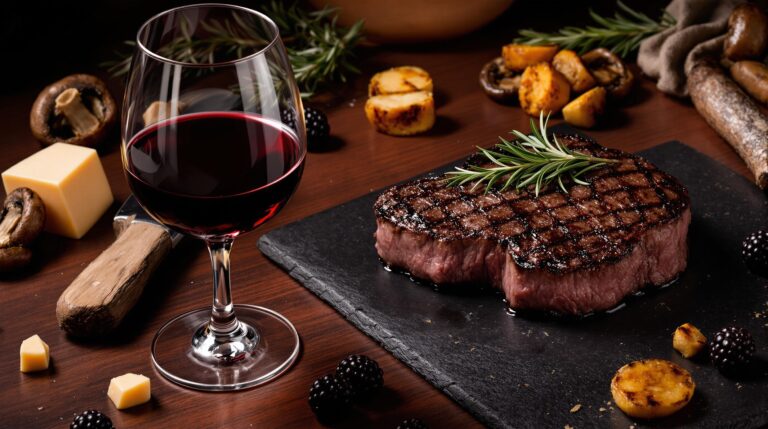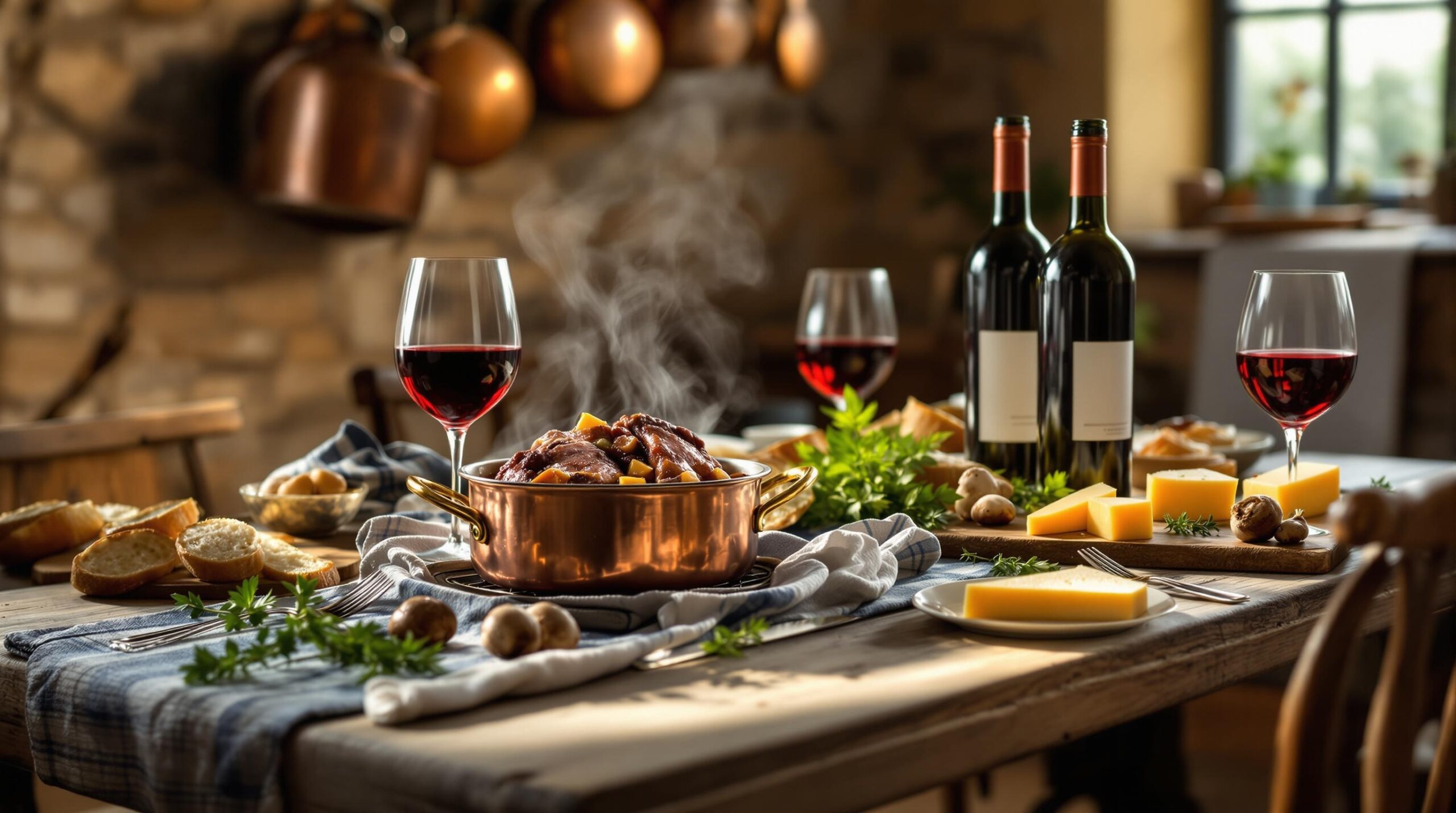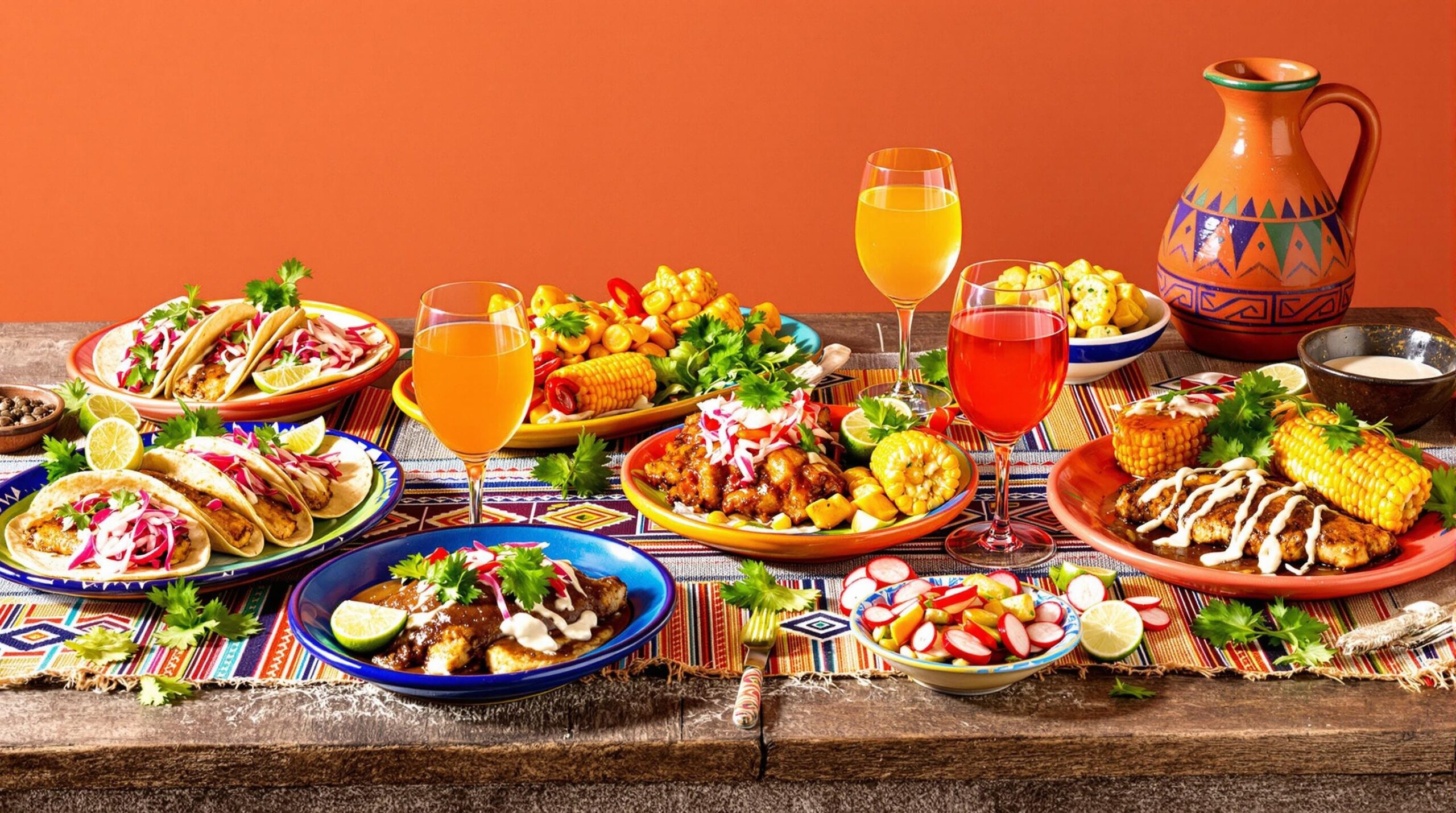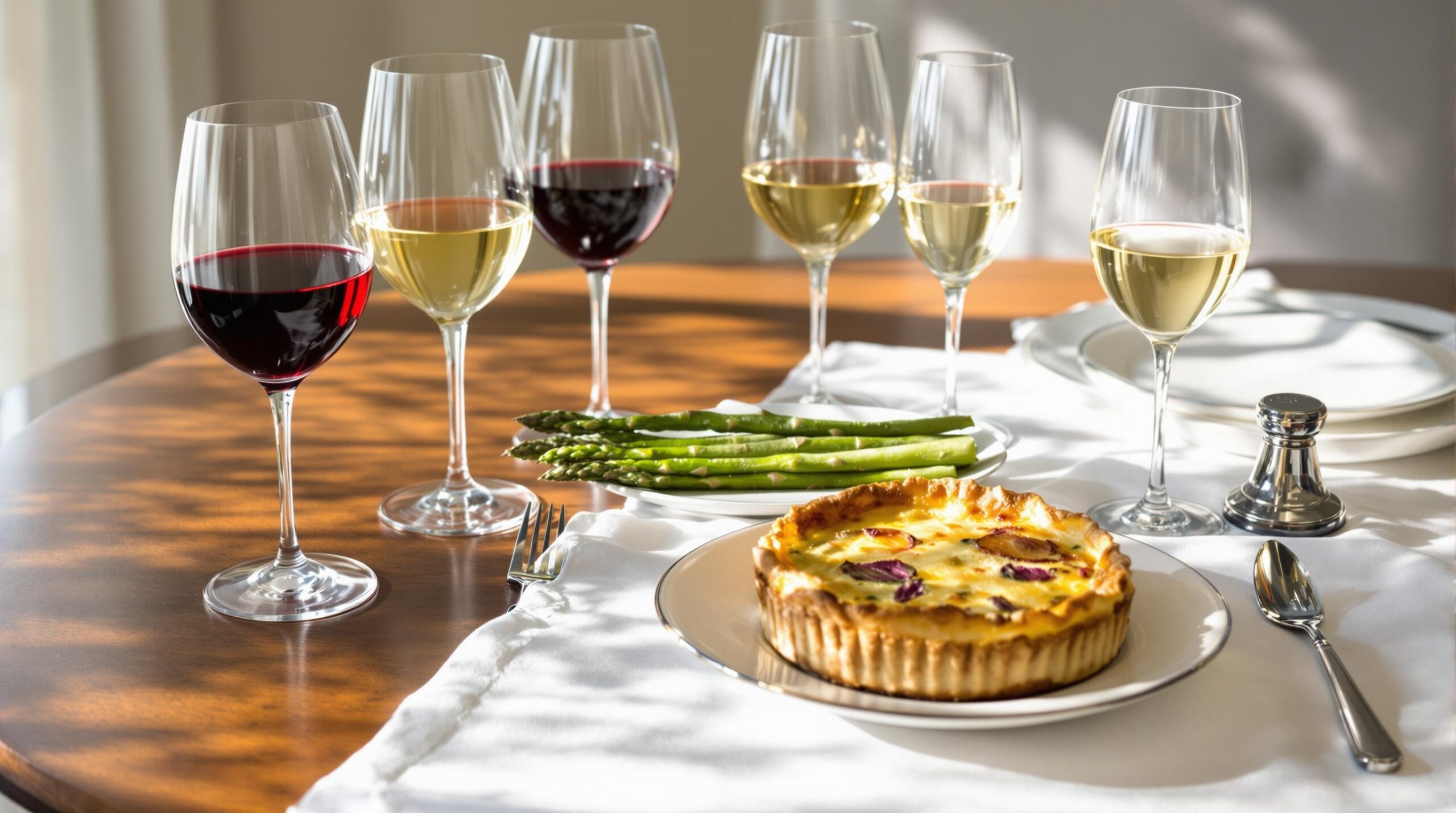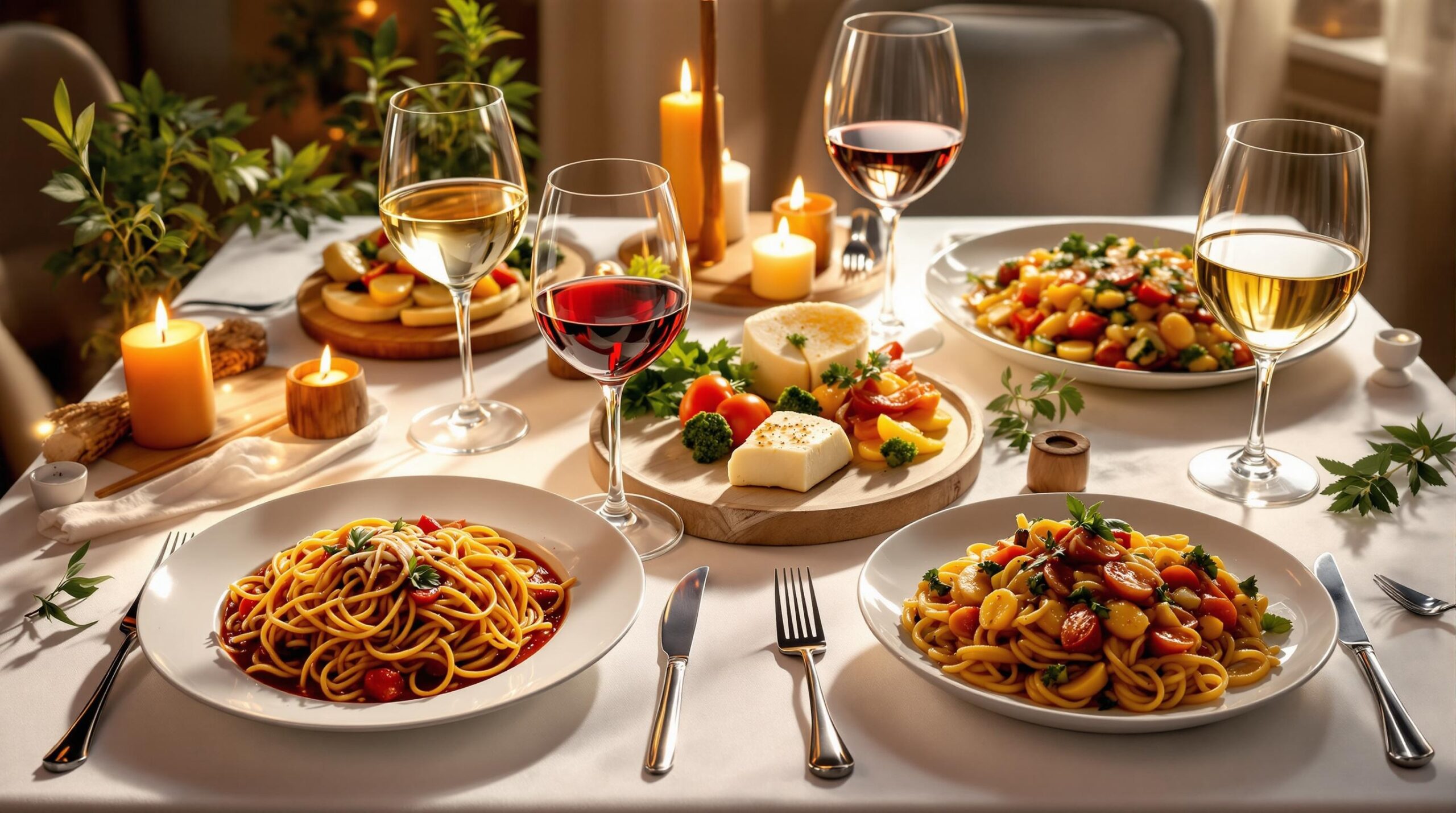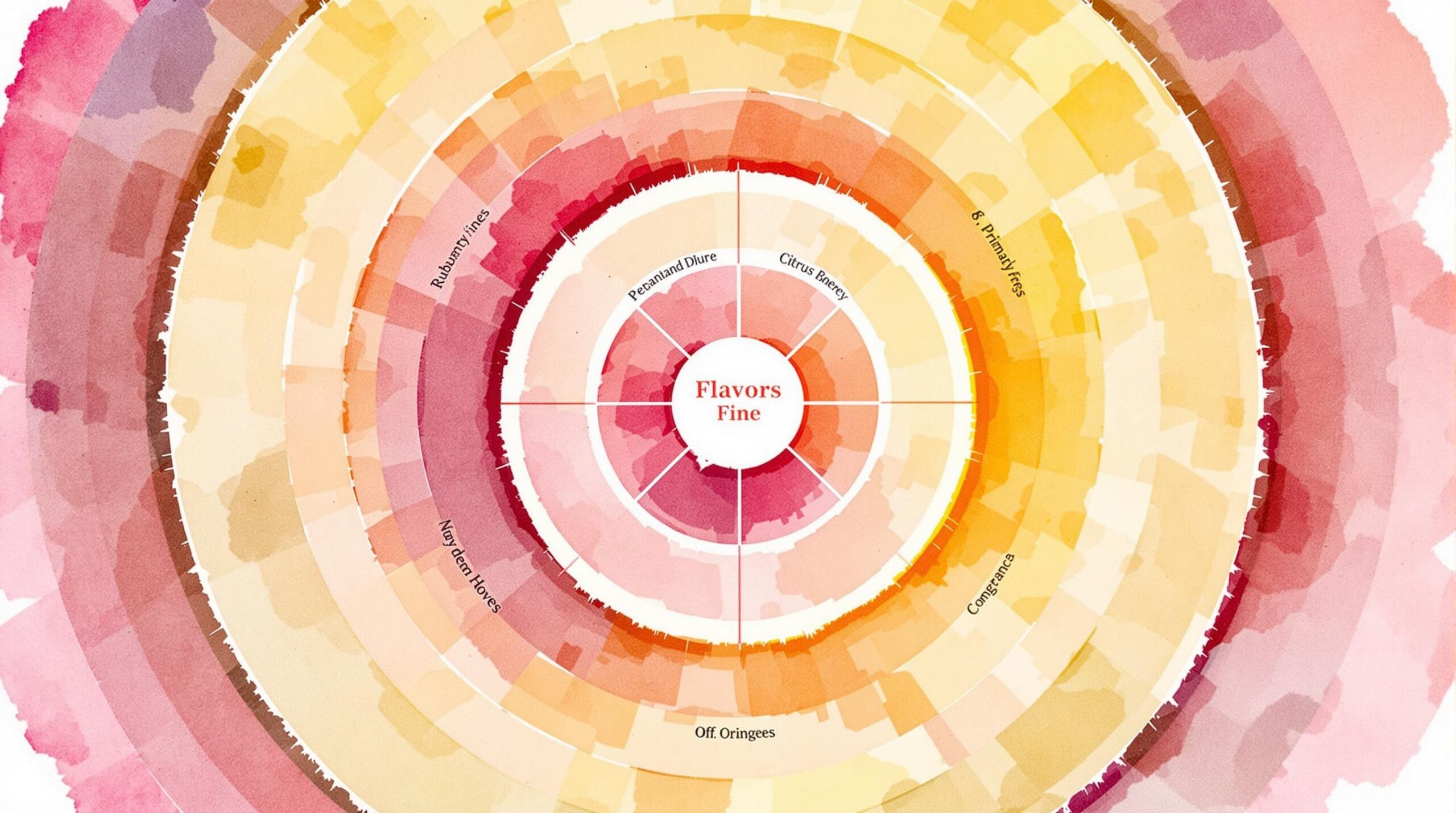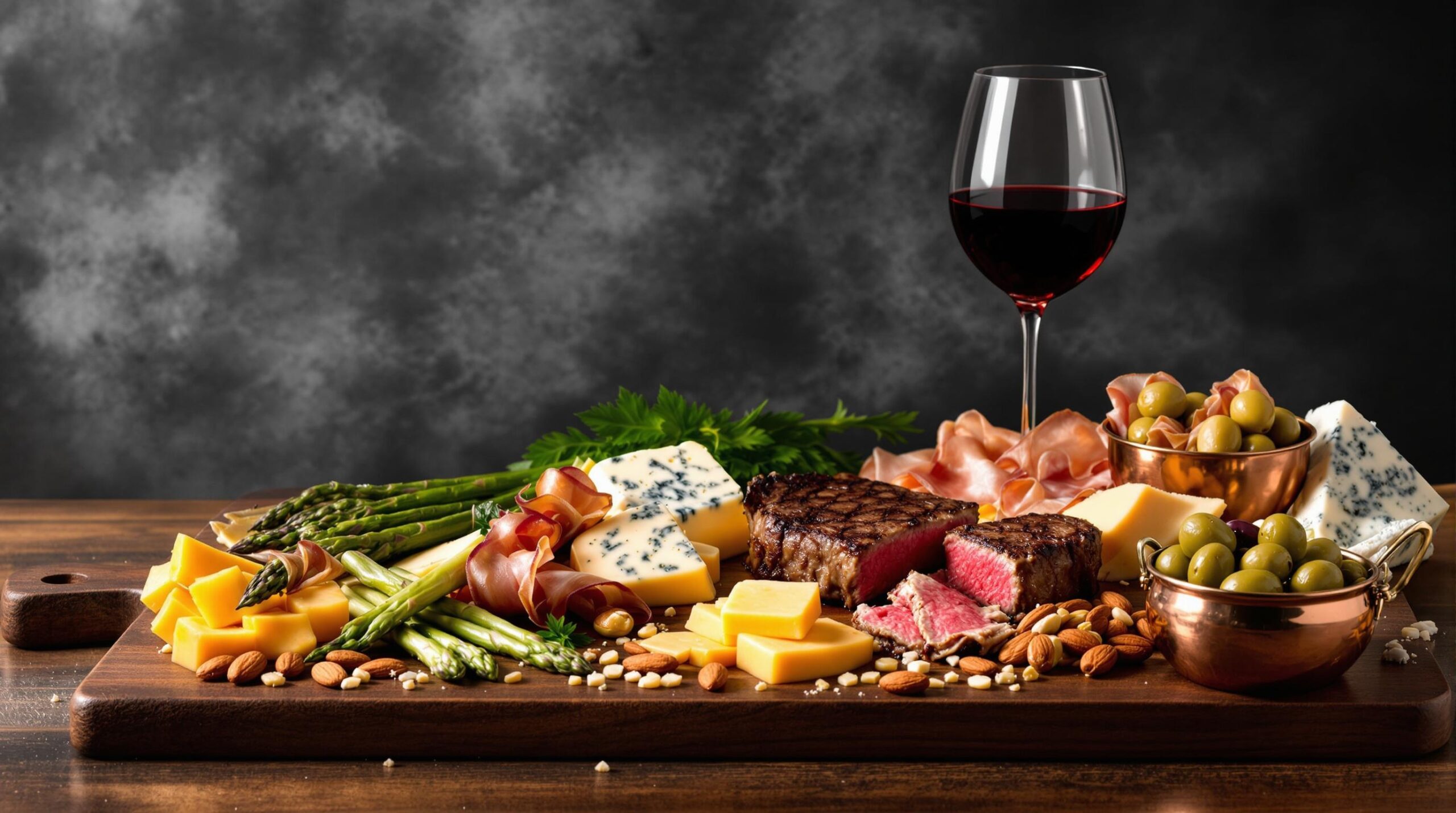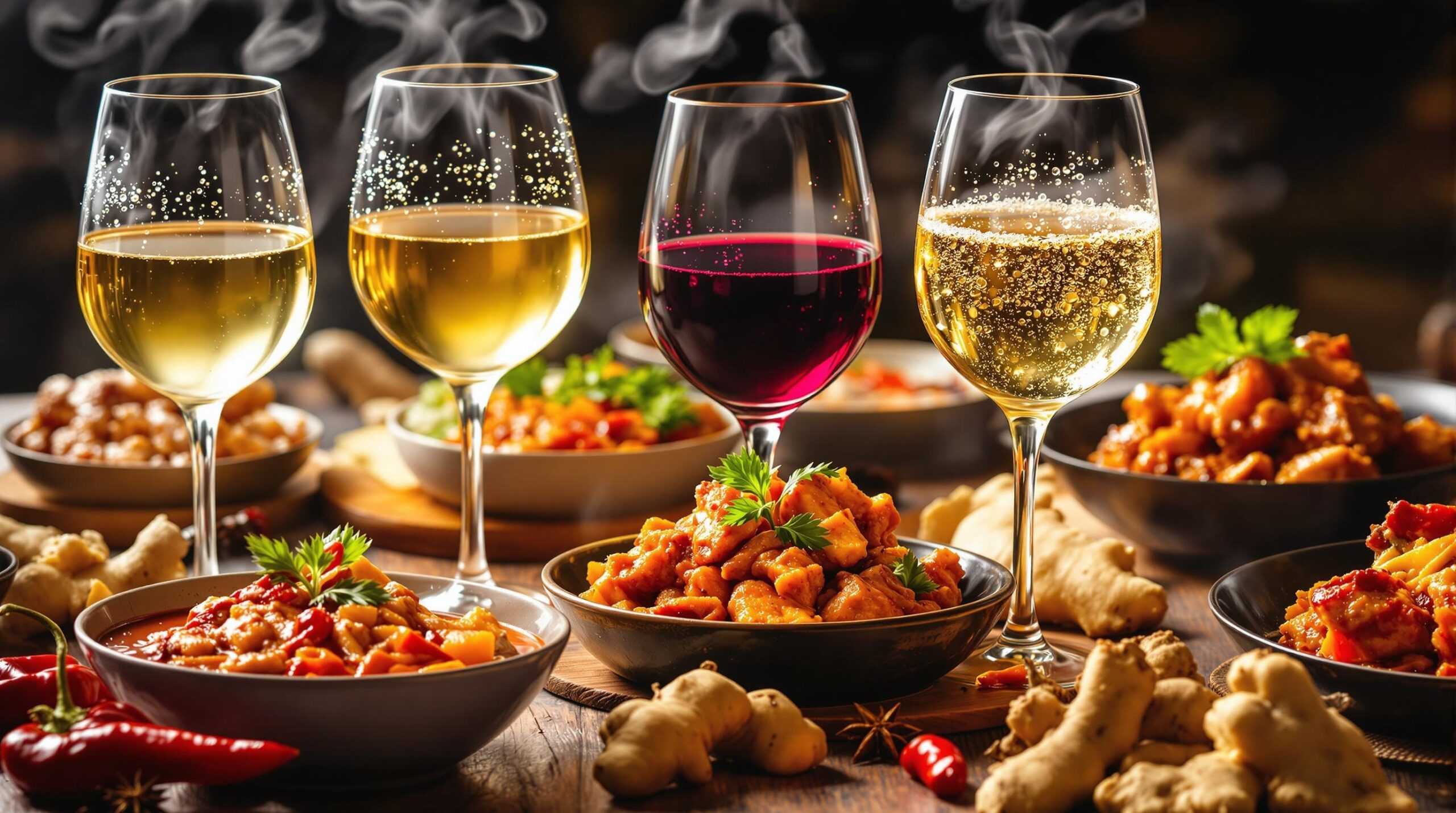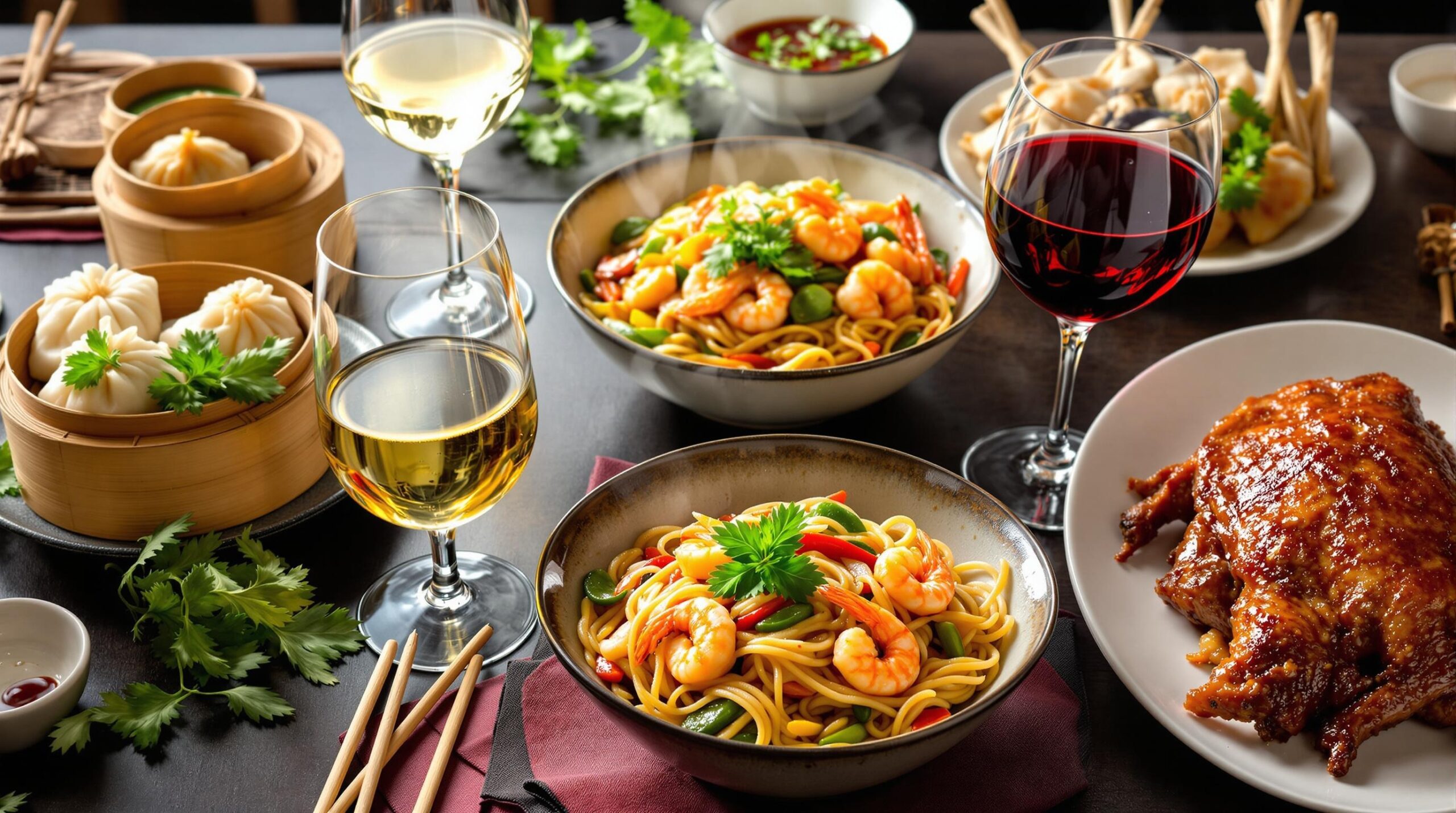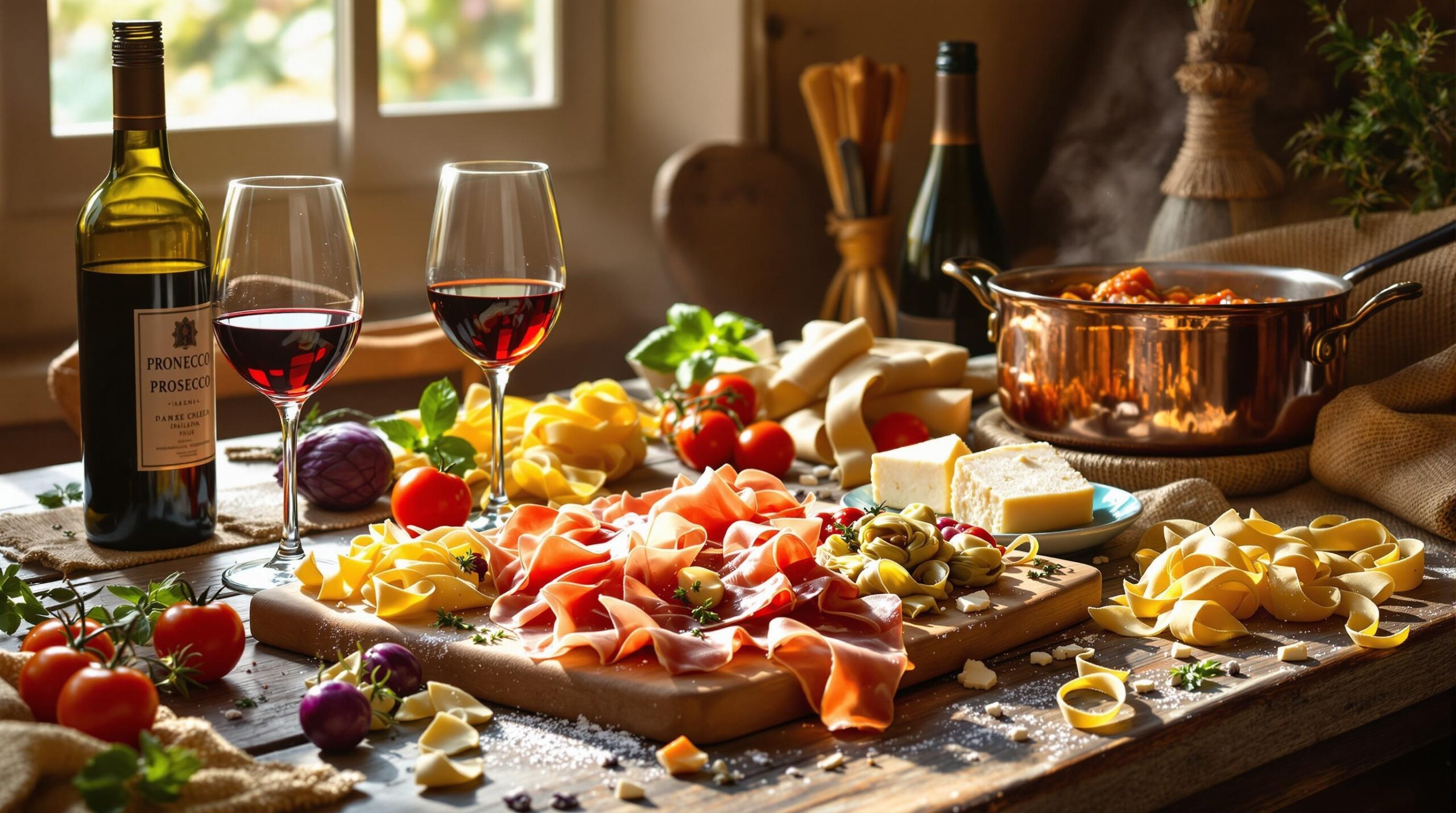Cabernet Sauvignon’s bold structure and rich tannins make it one of the most food-friendly red wines. This quick guide helps match this classic wine with dishes that enhance its best qualities.
Understanding Cabernet’s Flavor Profile
A well-made Cabernet Sauvignon displays black fruit notes, cedar, and bell pepper undertones. Its high tannin content and medium-high acidity create a framework that pairs naturally with protein-rich foods.
- Primary flavors: Black cherry, blackberry, cassis
- Secondary notes: Cedar, tobacco, green pepper
- Texture: Full-bodied with firm tannins
- Alcohol: 13.5-15%
Classic Meat Pairings
The wine’s structure makes it perfect for red meat dishes and game. Match Cabernet’s intensity with equally robust proteins.
| Cut | Preparation |
|---|---|
| Ribeye Steak | Grilled or Pan-seared |
| Lamb Chops | Herb-crusted |
| Venison | Roasted |
Vegetarian and Cheese Options
Umami-rich vegetables and aged cheeses complement Cabernet’s depth. Focus on hearty, roasted preparations and protein-rich vegetarian dishes.
- Grilled portobello mushrooms
- Roasted root vegetables
- Aged cheddar
- Aged gouda
- Blue cheese
Cooking tip: Add herbs like rosemary and thyme to enhance the wine’s natural herb notes.
Exploring Global Cabernet Sauvignon Styles
Different wine regions produce distinctly different styles of Cabernet Sauvignon, each offering unique pairing opportunities.
- Napa Valley: Bold, ripe fruit with high alcohol – pair with grilled steaks
- Bordeaux: More restrained, earthy notes – ideal with braised meats
- Australian: Intense fruit, mint notes – matches well with lamb
- Chilean: Medium-bodied, herbal – great with roasted vegetables
Temperature and Service Guidelines
Proper serving temperature significantly impacts Cabernet’s flavor profile and pairing success.
| Temperature Range | Impact on Wine |
|---|---|
| 60-65°F (15-18°C) | Optimal serving temperature |
| Above 70°F (21°C) | Alcohol becomes prominent |
| Below 55°F (13°C) | Tannins become harsh |
Decanting and Glassware Tips
Young Cabernets benefit from 30-60 minutes of decanting to soften tannins and release aromas.
- Glass shape: Large bowl with narrow rim
- Fill level: One-third full for proper aeration
- Decanter style: Wide base for maximum oxygen exposure
- Storage: Cool, dark place at 55°F (13°C)
Smart Buying and Storage Advice
Select Cabernets that match your serving occasion and storage capabilities.
- Entry-level ($15-25): Drink within 2-3 years
- Mid-range ($25-50): Can age 5-7 years
- Premium ($50+): Potential for 10+ years aging
Store bottles horizontally in a temperature-controlled environment.
| Storage Factor | Recommendation |
|---|---|
| Temperature | 55°F (13°C) |
| Humidity | 70-75% |
| Light exposure | Minimal to none |
10 Common Questions About Cabernet Sauvignon Pairings
What foods pair best with Cabernet Sauvignon?
Red meats are classic pairings – especially ribeye steak, lamb chops, and beef tenderloin. The wine’s tannins complement protein-rich foods and cut through fatty textures.
Should I serve Cabernet Sauvignon at room temperature?
Serve Cabernet between 60-65°F (15-18°C). If your room is warmer, chill the wine briefly in the refrigerator for 15-20 minutes before serving.
What cheese goes well with Cabernet Sauvignon?
Choose aged hard cheeses like aged cheddar, pecorino, or aged gouda. These cheeses match the wine’s bold structure and complement its tannins.
Can I pair Cabernet Sauvignon with fish?
Most fish dishes don’t work well with Cabernet. However, grilled tuna or swordfish can pair nicely due to their meaty texture and rich flavors.
What vegetarian dishes match with Cabernet?
- Grilled portobello mushrooms
- Roasted root vegetables
- Lentil-based dishes
- Eggplant parmesan
How long should I decant Cabernet Sauvignon?
Young Cabernets benefit from 30-60 minutes of decanting. Older vintages (10+ years) may only need 15-30 minutes to open up.
What herbs and spices work with Cabernet-friendly dishes?
Use rosemary, thyme, black pepper, and garlic. These herbs enhance both the food and bring out the wine’s natural flavors.
Can I cook with Cabernet Sauvignon?
Cabernet makes excellent pan sauces and reductions. Use it in beef stews or to deglaze pans after searing meats.
What desserts pair with Cabernet Sauvignon?
Choose dark chocolate based desserts or black forest cake. Avoid fruity or overly sweet desserts as they clash with the wine’s tannins.
What should I avoid pairing with Cabernet?
Skip light seafood, spicy foods, and citrus-based dishes. These combinations can make the wine taste metallic or overly bitter.
| Perfect Pairings | Avoid |
|---|---|
| Grilled red meats | Light fish |
| Aged cheeses | Spicy dishes |
| Dark chocolate | Citrus flavors |
| Mushroom dishes | Light salads |
Quick Tips for Serving
- Use large-bowled glasses to let the wine breathe
- Store bottles horizontally at 55°F (13°C)
- Open the bottle 30 minutes before serving
- Consider the wine’s age when deciding decanting time

